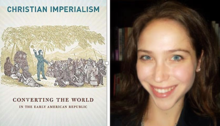How will I teach this course next time?
How will I teach this course next time? What changes will I make? What worked? What flopped? These are the questions that all teachers must ask themselves. As “Witnessing the Sixties” draws to a close, I am reflecting on its second coming, which will occur in January 2020. Demonstrating growth and willingness to improve a…









